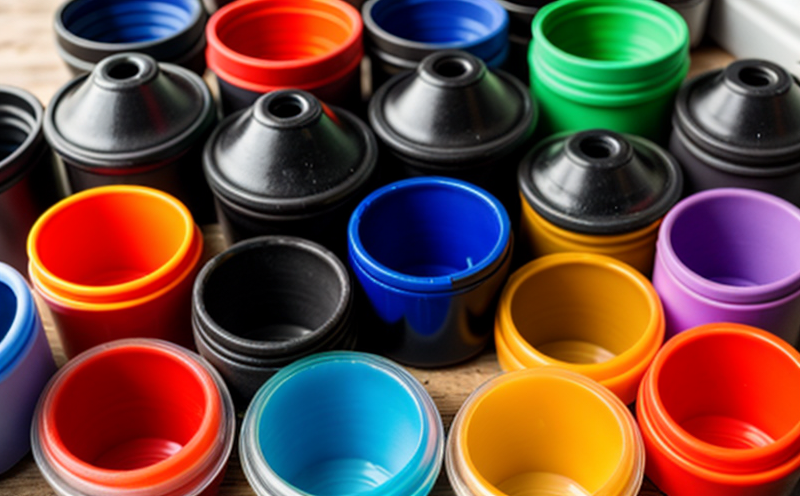UNE EN 15345 Recycled Polyvinyl Chloride Testing
The UNE EN 15345 standard is pivotal in ensuring the quality and safety of recycled polyvinyl chloride (PVC) products. This standard provides a comprehensive framework for testing recycled PVC to assess its mechanical, chemical, and dimensional properties. Compliance with this standard is essential for manufacturers aiming to ensure their recycled PVC materials meet stringent quality criteria.
Recycled PVC is widely used in various industries including construction, automotive, and packaging due to its durability, flexibility, and cost-effectiveness. However, the use of recycled material introduces unique challenges such as variability in composition, which can affect product performance. UNE EN 15345 addresses these challenges by providing standardized testing methods that help manufacturers maintain consistent quality.
The standard covers a range of tests designed to evaluate different aspects of recycled PVC, including mechanical strength (tensile and flexural), impact resistance, heat deflection temperature, elongation at break, and chemical stability. Each test is critical for ensuring the recyclability and usability of PVC in end products.
Proper specimen preparation is crucial for accurate testing results. Specimens are typically cut from recycled PVC sheets or granules to standard dimensions specified by UNE EN 15345. The choice of specimen size can significantly influence test outcomes, highlighting the importance of precise cutting and handling.
Instrumentation plays a vital role in performing these tests accurately. Commonly used instruments include universal testing machines for mechanical property tests, differential scanning calorimeters (DSC) for assessing thermal stability, and Fourier transform infrared spectroscopy (FTIR) for compositional analysis. The choice of instrumentation should align with the specific requirements outlined in UNE EN 15345 to ensure reliable data.
Test results are meticulously documented and reported according to the standard's guidelines. Reports typically include detailed descriptions of test methods, specimen preparation, testing conditions, and resultant values. Compliance with these reporting standards ensures transparency and traceability, facilitating better decision-making in quality control processes.
The UNE EN 15345 framework also emphasizes the importance of considering environmental factors during testing. For instance, some tests may need to be conducted under controlled temperature conditions to simulate real-world usage scenarios accurately. This holistic approach ensures that recycled PVC products not only meet performance expectations but also contribute positively to sustainability goals.
Compliance with UNE EN 15345 is increasingly becoming a requirement for manufacturers in the polymer and plastics sector due to growing consumer demand for sustainable products. By adhering to this standard, companies can enhance their reputation for producing high-quality recycled PVC materials while also meeting regulatory requirements.
In summary, UNE EN 15345 provides a robust foundation for testing recycled PVC, ensuring consistent quality across production batches and promoting sustainability in the polymer industry. Understanding its comprehensive scope and precise application is essential for stakeholders involved in the recycling process of PVC materials.
Applied Standards
| Standard Code | Description |
|---|---|
| UNE EN 15345:2009 | Test methods for recycled PVC materials used in construction products. |
| ISO 178:2016 | Tensile testing of plastics. |
| ASTM D1525-19 | Flexural properties of plastic materials. |
| ISO 8301:2014 | Thermal stability testing using differential scanning calorimetry (DSC). |
| ASTM D675-19 | Elongation at break for plastic materials. |
| UNE EN 12384:2009 | Impact resistance testing of plastics. |
| EN ISO 15743-1:2010 | Chemical analysis methods for PVC materials. |
Industry Applications
The application of UNE EN 15345 is particularly significant in the construction, automotive, and packaging industries. In construction, recycled PVC materials are used for flooring and wall coverings due to their durability and aesthetic appeal. Ensuring compliance with this standard helps in maintaining consistent quality across these applications.
In the automotive sector, recycled PVC is utilized in dashboards, door panels, and seat covers where its flexibility and chemical resistance make it an ideal choice. Proper testing according to UNE EN 15345 ensures that these materials withstand harsh environmental conditions without compromising performance or safety.
For packaging applications, recycled PVC films are used for food packaging due to their excellent barrier properties against moisture and oxygen. Testing these films using the methods prescribed by UNE EN 15345 guarantees their integrity during storage and transportation, thereby ensuring product freshness and safety.
Use Cases and Application Examples
A common use case involves manufacturing companies that produce flooring tiles using recycled PVC. By adhering to UNE EN 15345 standards during the production process, these companies can ensure their products meet stringent mechanical strength requirements. For instance, tensile testing according to ISO 178:2016 helps verify the load-bearing capacity of the tiles.
In the automotive industry, a manufacturer might use recycled PVC for seat covers. The flexural properties tested by ASTM D1525-19 are crucial in assessing whether the material can withstand continuous bending without cracking or breaking. This ensures passenger safety and comfort during vehicle usage.
For packaging applications, a company might test recycled PVC films using thermal stability methods per ISO 8301:2014 to ensure they remain intact under high temperatures encountered in processing plants. These tests are vital for maintaining product integrity and preventing contamination of packaged goods.
These examples illustrate how UNE EN 15345 plays a critical role in ensuring the quality, safety, and performance of recycled PVC materials across various industries.





